The IAF began with US helicopters in the fifties and expanded gradually to include license-built French and Soviet helicopters. The circle is coming round once again with planned induction of the Chinook heavy-lift and the Apache attack helicopters, both of US origin. However, the Chetak/Cheetah family are tottering on their undercarriages due to their long service and vigorous use at the outer reaches of their performance envelopes in inhospitable terrain and merciless weather conditions. The heavy-lift Mi-26 and Mi-8 medium-lift helicopters are obsolete and need replacement. ‘Make in India’ and a new sense of purpose for modernisation of the Indian military, especially after the Chinese incursions and transgressions into India climaxed in the Doklam episode, thus present the opportunity to modernise the IAF’s helicopter fleet.
IAF gripes about complementary shortfalls in the transport and helicopter fleet, are relegated to lower audibility…
At the peak of the Doklam stand-off, the crescendo about deficiencies in India’s air power vis-a-vis a Sino-Indian military confrontation, the shrillest audible note alluded to sub-optimal and dwindling ‘squadron strength’ of the Indian Air Force (IAF). The figures being discussed in this context referred to the combat squadrons of the IAF, a statistic that Indian media and defence analysts are obsessed with. Consequently, IAF gripes about complementary shortfalls in the transport and helicopter fleet, are relegated to lower audibility although the near absence of an indigenous aerospace industry, exorbitant costs of imported high technology aircraft of all varieties and budgetary constraints have meant that these fleet are also adversely affected, possibly to an even graver level.
With India’s territorial expanse of over 3,000,000 sq km and land borders of 15,106 km with its seven land neighbours, two of whom are definitely inimical towards India, the current inventory of IAF helicopters is woefully inadequate. According to Flight Global’s publication World Air Forces 2017, the IAF has 432 helicopters while Indian publication Bharat Shakti puts the figure at around 374. The official IAF website says its helicopter fleet has over 500 helicopters but does not elaborate further. When compared to the over 300-helicopter strength of Air Methods, a US-based provider of Helicopter Emergency Medical Services (HEMS), the IAF strength gets lampooned pitiably, especially when viewed against the claim that the IAF is the fourth largest Air Force in the world.
Need For Modernisation
The IAF Doctrine’s exhortation is to be equally effective and credible during war and peace. While fixed-wing combat aircraft essentially train during peacetime for possible wartime employment, IAF helicopters spend a substantial proportion of their peacetime flying on operational missions by way of a large chunk on humanitarian aid in remote regions. Its wartime operational roles include attack, anti-tank, armed, Suppression of Enemy Air Defences (SEAD), communication, reconnaissance, Search and Rescue, Casualty Evacuation, Special Heli-borne Operations (SHBO), Special Operations, logistics support to the Indian Army and civil administration and air-to-air combat against helicopters as well as fixed-wing aircraft for which pilots flying helicopters in offensive roles in the Tactical Battle Area (TBA) are given training. However, a large chunk of their peacetime toils is as strenuous and vigorous as any mission in the proximity of an enemy. Thus, peacetime operations for the IAF’s helicopter fleet exact helicopter attrition and impose wear and tear on the machines much as wartime deployment would.
Delivery of the 15 Chinooks for which a contract was signed in September 2015, is expected to begin in March 2019 and completed in March 2020…
The IAF began with US helicopters in the fifties and expanded gradually to include license-built French and Soviet helicopters. It is coming to full circle with the planned induction of the Chinook heavy-lift and the Apache attack helicopters, both of US origin. However, the Chetak/ Cheetah family are tottering on their undercarriages due to their long service and vigorous use at the outer reaches of their performance envelopes in inhospitable terrain and merciless weather conditions. Indeed, in March 2015, a group of wives of Army officers had even petitioned the Defence Minister to stop the use of these “outdated” helicopters to avoid casualties. The heavy-lift Mi-26 and Mi-8 medium-lift helicopters are also obsolete and need replacement. ‘Make in India’ and a new sense of purpose for modernisation of the Indian military, especially after the Chinese incursions and transgressions into India climaxed in the Doklam episode, thus present the opportunity to modernise the IAF’s helicopter fleet.
Classification For Utility Roles
Civil aviation philosophy stipulates a Maximum All Up Weight (MAUW) of 3,175 kg as the magic figure above which civil helicopters must fly under more stringent regulations. In the US, FAR Part 29 rules apply to helicopters above 3,175 kg MAUW as compared to FAR Part 27 rules for lighter ones. For military helicopters, there is no universally acknowledged weight classification but by generally accepted convention, they are categorised into ‘heavy’, ‘medium’ and ‘light’ helicopters. Light helicopters are those under 5,543 kg MAUW and medium-lift ones are those with MAUW from about 12,000 lbs to 45,000 lbs (20,400 kg). Above this MAUW lies the realm of the heavy lift.
Heavy-Lift Helicopters
The Russian Mi-26 is in service with the IAF since 1986, but does not have a satisfactory maintenance record. In 2009, the Ministry of Defence (MoD) invited bids for a new heavy-lift helicopter and the Chinook CH-47 emerged the winner against the Mi-26 T2. In 2012, the MoD finally decided to order 15 Chinook CH-47 helicopters. The twin-rotor, Boeing-manufactured Chinook has a unique design incorporating powerful contra-rotating tandem rotors and is being operated by around 20 countries for heavy-lift assault, troop movement, logistics support, aerial battlefield recovery and Special Operations. Capable of being refuelled mid-air for extended range, the Chinook can carry 55 combat-ready troops or over 11,100 kg of cargo.
The Mi-26 was larger with a maximum take-off weight of 56,000 kg and a carriage capacity almost double that of a Chinook whose maximum gross weight is 22,668 kg. However, the Chinook can be transported in the hold of the C-17 Globemaster III; the advantage of being able to transport the Chinook over large (strategic) distances is obvious. By December 2015, the IAF realised that there was only one serviceable Mi-26 left and that too had only 100 hours left before major servicing which would take around six months.
IAF helicopters spend a substantial proportion of their peacetime flying on operational missions by way of a large chunk on humanitarian aid in remote regions…
Flying of the Mi-26 was restricted to only urgent operational tasks and discussion initiated with Russian Helicopters for overhauling three Mi-26 helicopters but nothing seems to have come out of those discussions. Meanwhile, delivery of the 15 Chinooks for which a contract was signed in September 2015 for Rs 8,048 crore, is expected to start in March 2019, and the last one is to be delivered in March 2020. Thus there is expected to be a period of several months during which the IAF may have none or at the most, one heavy-lift helicopter at its call. However, with the induction of the Chinook, the IAF would be in a cheery position as far as heavy-lift is concerned.
Medium-Lift Helicopters
Soviet/Russian origin helicopters have been the favoured medium-lift machines for the IAF. In the 1960s, India had bought the Mi-4, a light machine and then went on to buy 128 Mi-8s and 170 Mi-17s, both medium-lift machines. In 2000, India signed up for 40 Mi-17 1Vs and in 2008, for 80 Mi-17 V-5s; followed by three additional contracts in 2012-13 for 71 more of the latter. The helicopters are flown into India in ready-to-assemble kits and built up at the IAF depot in Chandigarh. In February last year, the last three of 151 Mi-17V5 helicopters contracted for $3 billion were delivered to the IAF.
Reportedly, another contract for 48 more of the same version is expected to fructify by end-2017. Rosoboronexport’s CEO Alexander Mikheev told the media at the Russian air show MAKS in July 2017 that, “We hope that we will reach an agreement before the end of this year.” This will bring the total number of Mi-17V5s to 199. The Mi-17 was designed based on the Mi-8 airframe. The helicopter retains the outstanding performance characteristics of its predecessors and can fly in tropical and maritime climates as well as in desert conditions.
While the Mi-8 was an 11 ton MAUW machine with a service ceiling of 14,765 ft, the Mi-17 has a MAUW of 13 tonne and a service ceiling of 19,690 ft. The Mi-17V-5 has a maximum speed of 250 kmph, and a standard range of 580 km, which can be extended to 1,065 km when fitted with two auxiliary fuel tanks. Designed to transport cargo inside the cabin and on an external sling, the Mi-17V5 is one of the world’s most advanced helicopters. It can also be deployed for troop and arms transport, fire support, convoy escort, patrol and Search-And-Rescue (SAR) missions. The standard portside door and ramp at the rear allow for the quick ingress and egress of troops and cargo. The helicopter can be fitted with an extended starboard sliding door, rappelling and parachute equipment, searchlight, FLIR system and emergency flotation system. It can transport either 36 armed soldiers internally or 4,500 kg of load on a sling. It is equipped with a new Full-Authority Digital Engine Control (FADEC) system. In short, moving ahead, the Mi-17 V5 is a modern, efficient and battle-worthy medium-lift helicopter for the IAF to have. It may be mentioned here that the Mi-17 family has been favoured by the IAF and the Indian Army for special operations due to its battle-worthy features.
The IAF had started inducting 62 Dhruv Advanced Light Helicopters (ALH) produced by HAL, but is unhappy due to its poor performance and unsuitability to the more critical roles of IAF. With a maximum AUW of 5.5 tonne, the Dhruv ALH lies just on the borderline between ‘light’ and ‘medium’. Dhruv ALH can carry 12 passengers besides the crew. Series production of Dhruv ALH started in 2001 and it has a twin-engine safety to offer in contrast to the Light Utility Helicopters in use by IAF all these years.




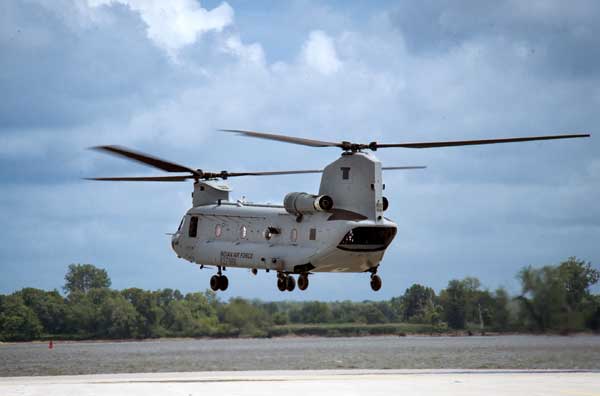
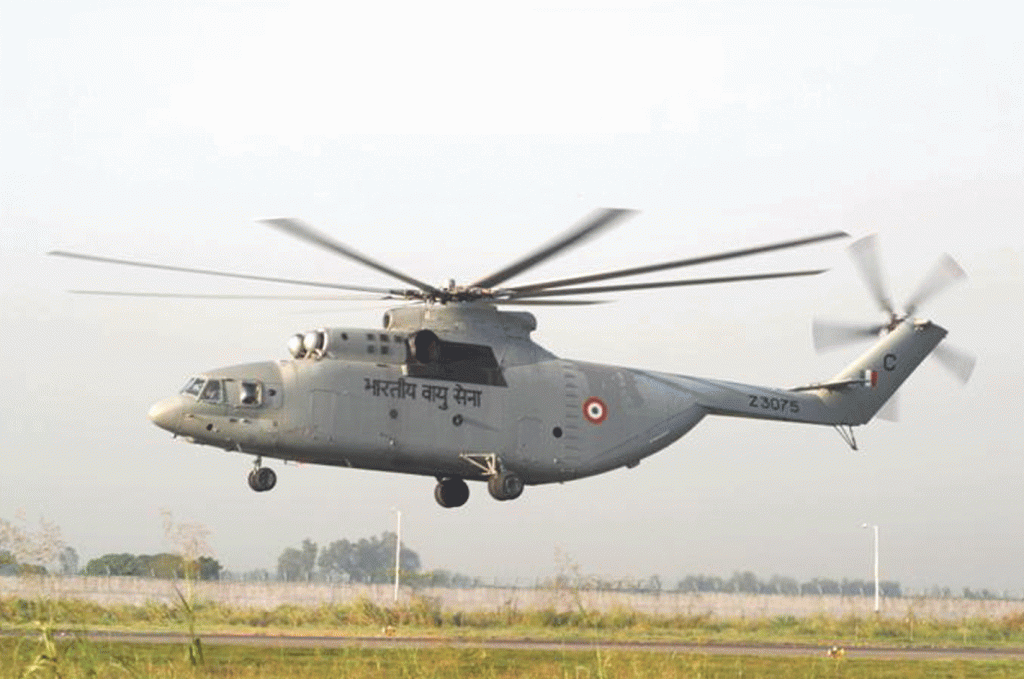
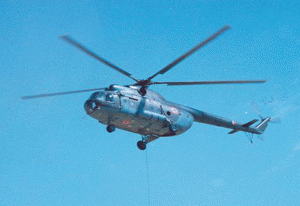
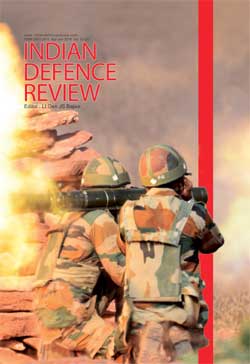
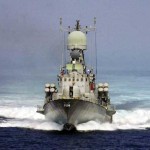
Well articulated presentation of the current situation and the predicament of the IAF. The fact that the Indian Armed forces are managing the variety of tasks with vintage helicopters speaks volumes of the capabilities and competency of the Armed Forces Pilots and Engineers.
Gp Capt could you explain the penchant of the Air Force to acquire Attack Helicopters. It is only in India where this unsatisfactory arrangement exists and has been the delaying factor in the acquisition of these machines.Attack helicopters fly within the zone of the Tactical Battle Area (TBA). The machines will be co operating with and supporting the ground forces closely in flexible and fluid battle conditions. This requires that the pilots are very familiar with the ground forces method of operations and be tactically sound in all operations of war of the Army. Sad to say
the Air Force pilots are not trained in these aspects and nor does the Air Force have the inclination to train the pilots as such. It is best left to the Army whose officers will fly these machines and will also be trained in all ops of war as is required by all Officers in the Army irrespective which Arm they belong to. Since the Air forces carries more favour with the babus of the MOD they have incessantly driven to keep these machines with the Air Force. If good sense prevails all attack helicopters should be transferred to the Army keeping organisational egos aside.